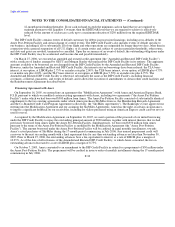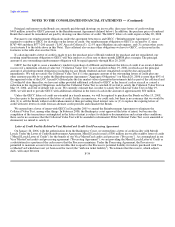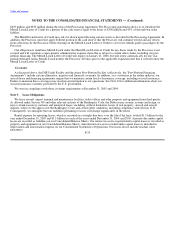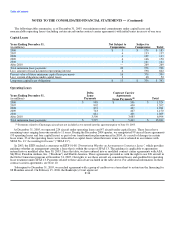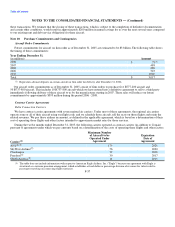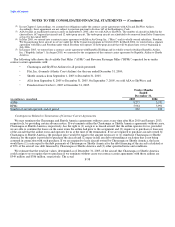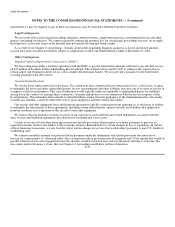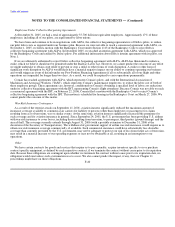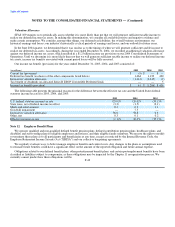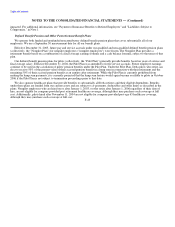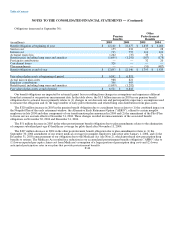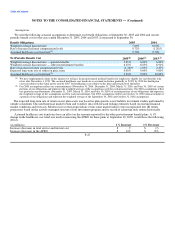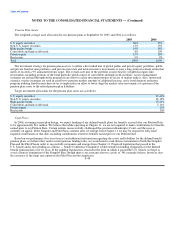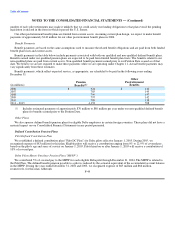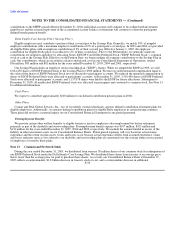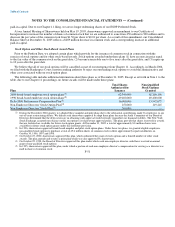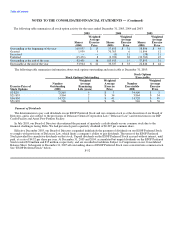Delta Airlines 2005 Annual Report Download - page 104
Download and view the complete annual report
Please find page 104 of the 2005 Delta Airlines annual report below. You can navigate through the pages in the report by either clicking on the pages listed below, or by using the keyword search tool below to find specific information within the annual report.
Table of Contents
NOTES TO THE CONSOLIDATED FINANCIAL STATEMENTS — (Continued)
Valuation Allowance
SFAS 109 requires us to periodically assess whether it is more likely than not that we will generate sufficient taxable income to
realize our deferred income tax assets. In making this determination, we consider all available positive and negative evidence and
make certain assumptions. We consider, among other things, our deferred tax liabilities; the overall business environment; our
historical earnings and losses; our industry's historically cyclical periods of earnings and losses; and our outlook for future years.
In the June 2004 quarter, we determined that it was unclear as to the timing of when we will generate sufficient taxable income to
realize our deferred tax assets. Accordingly, during the year ended December 31, 2004, we recorded an additional valuation allowance
against our deferred income tax assets, which resulted in a $1.2 billion income tax provision on our 2004 Consolidated Statements of
Operations. Until we determine it is more likely than not that we will generate sufficient taxable income to realize our deferred income
tax assets, income tax benefits associated with current period losses will be fully reserved.
Our income tax benefit (provision) for the years ended December 31, 2005, 2004, and 2003 consisted of:
(in millions) 2005 2004 2003
Current tax (provision) $ (9) $ — $ —
Deferred tax benefit (exclusive of the other components listed below) 1,464 1,139 420
Increase in valuation allowance (1,414) (2,345) (9)
Tax benefit of dividends on allocated Series B ESOP Convertible Preferred Stock — — 5
Income tax benefit (provision) $ 41 $ (1,206) $ 416
The following table presents the principal reasons for the difference between the effective tax rate and the United States federal
statutory income tax rate for 2005, 2004, and 2003:
2005 2004 2003
U.S. federal statutory income tax rate (35.0)% (35.0)% (35.0)%
State taxes, net of federal income tax effect (3.3) (1.5) (2.1)
Meals and entertainment 0.3 0.3 1.1
Goodwill impairment — 7.5 —
Increase in valuation allowance 36.6 58.8 0.8
Other, net 0.3 0.1 0.2
Effective income tax rate (1.1)% 30.2% (35.0)%
Note 12. Employee Benefit Plans
We sponsor qualified and non-qualified defined benefit pension plans, defined contribution pension plans, healthcare plans, and
disability and survivorship plans for eligible employees and retirees, and their eligible family members. We reserve the right to modify
or terminate these plans as to all participants and beneficiaries at any time, except as restricted by the Internal Revenue Code, the
Employee Retirement Income Security Act ("ERISA") and our collective bargaining agreements.
We regularly evaluate ways to better manage employee benefits and control costs. Any changes to the plans or assumptions used
to estimate future benefits could have a significant effect on the amount of the reported obligation and future annual expense.
Obligations related to our defined benefit plans, other postretirement benefit plans, and certain postemployment benefits have been
classified as liabilities subject to compromise, as these obligations may be impacted by the Chapter 11 reorganization process. We
currently cannot predict how these obligations will be F-42


